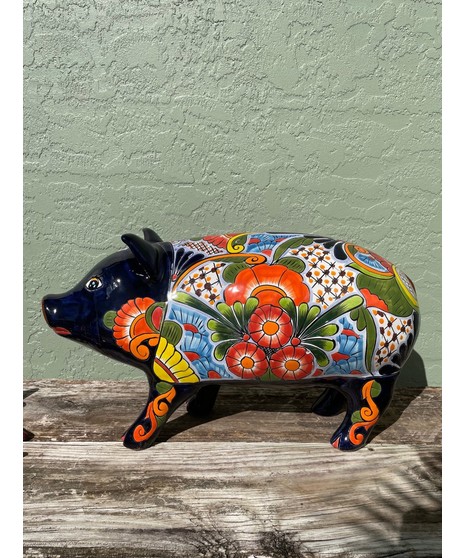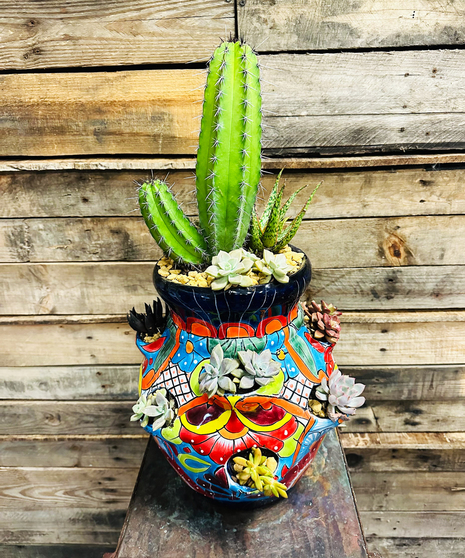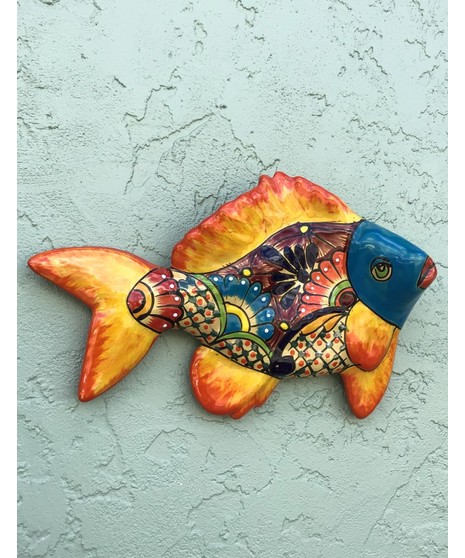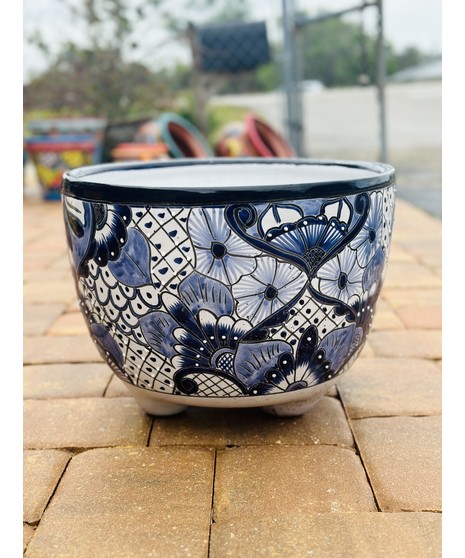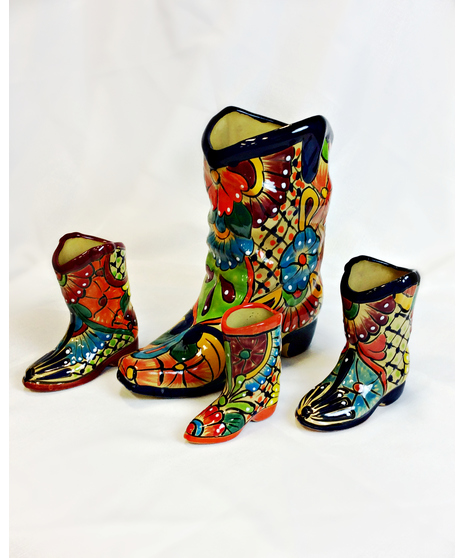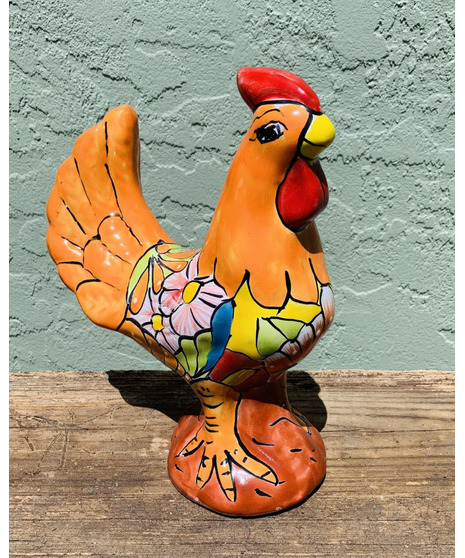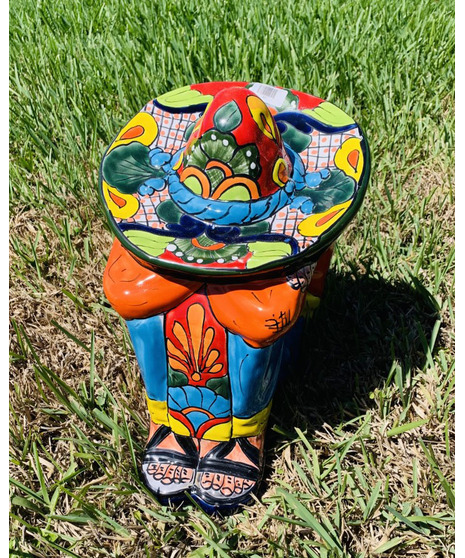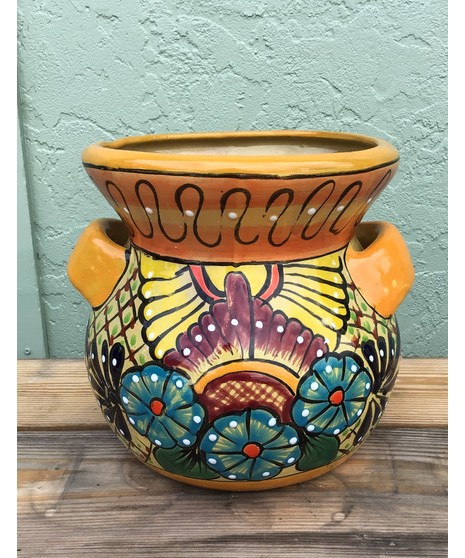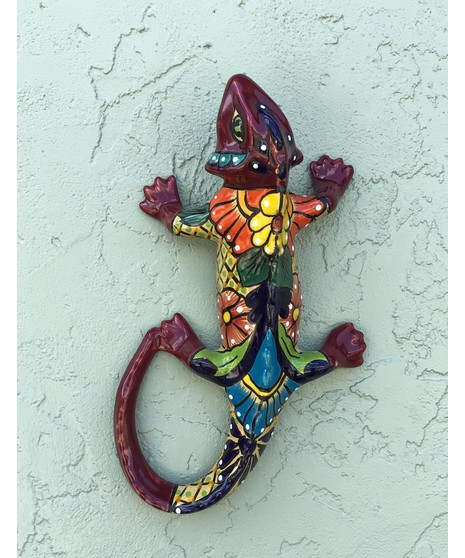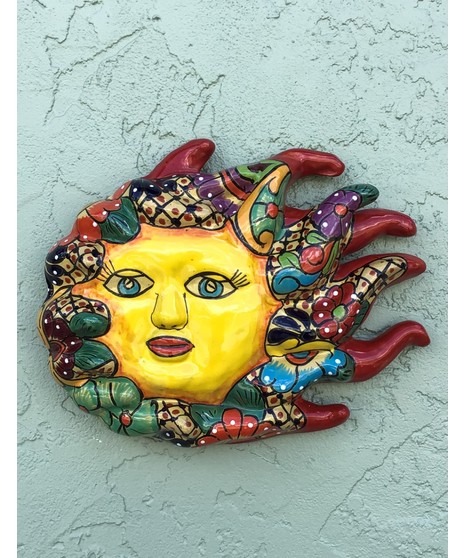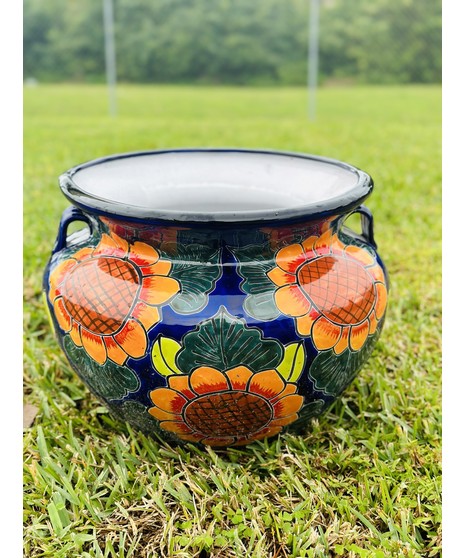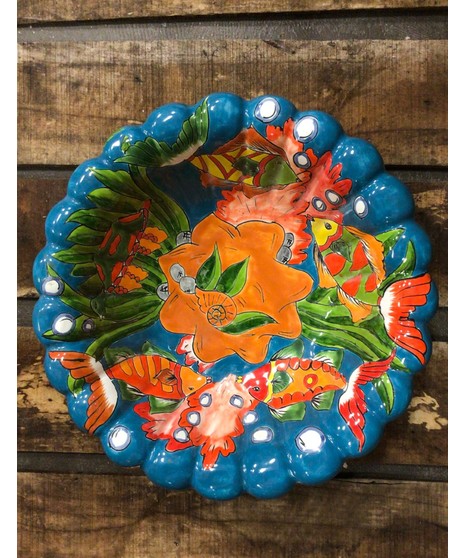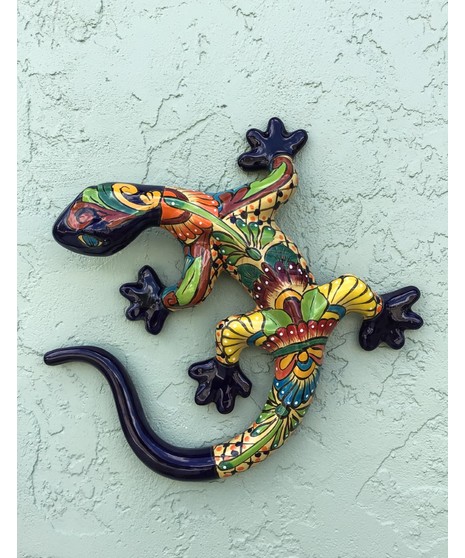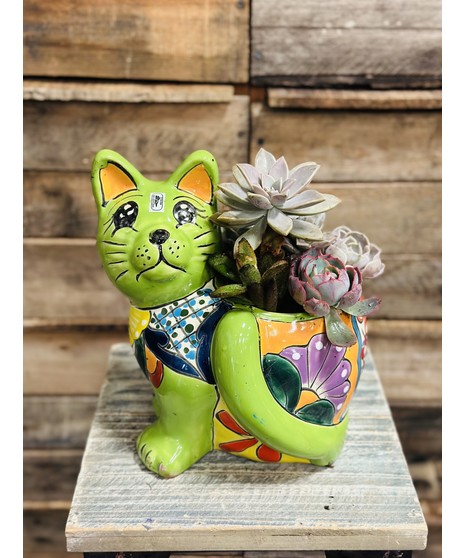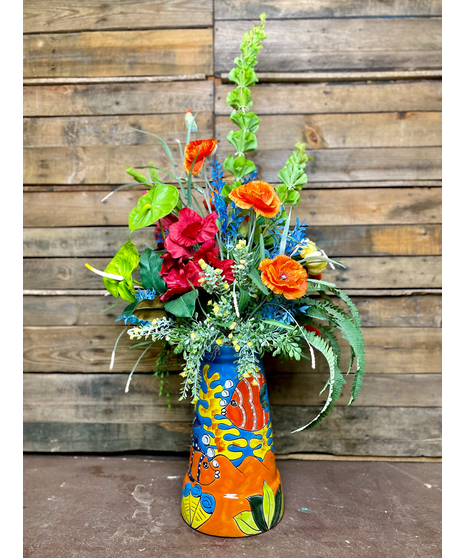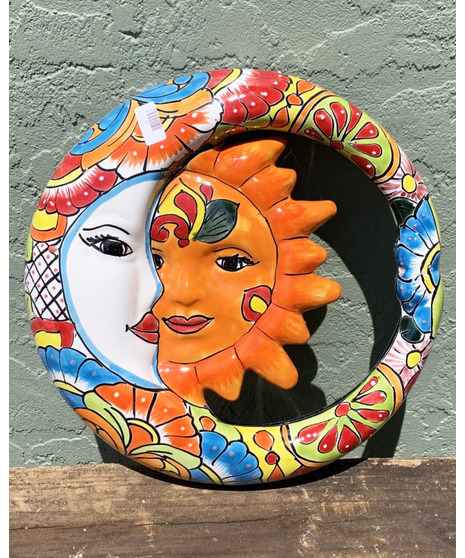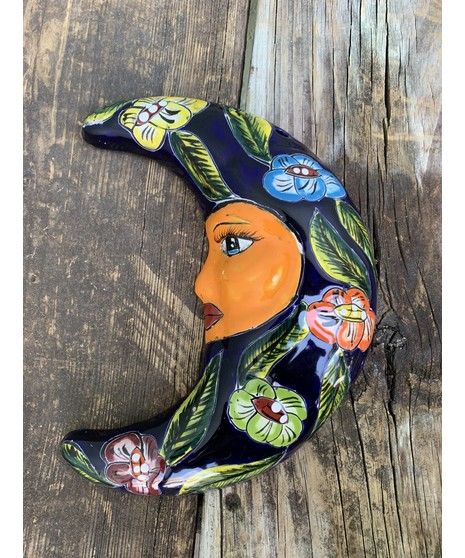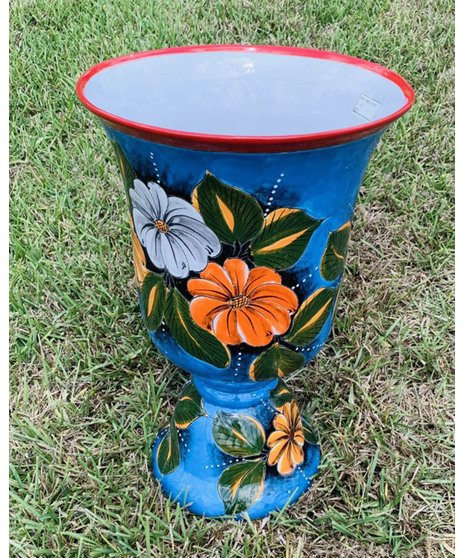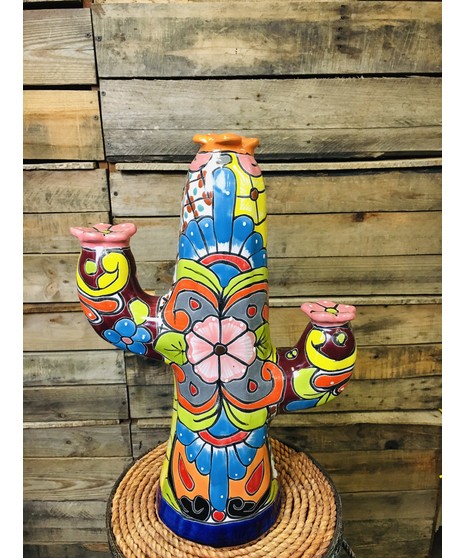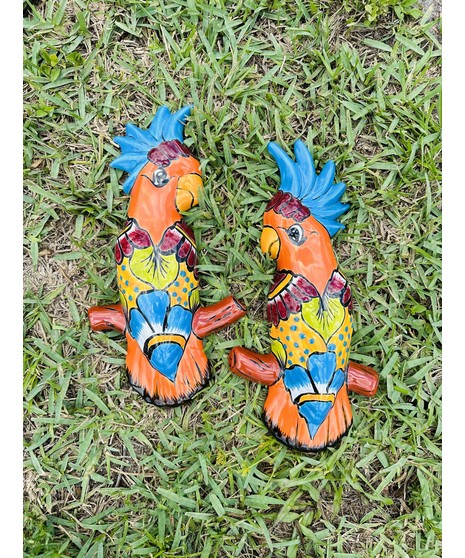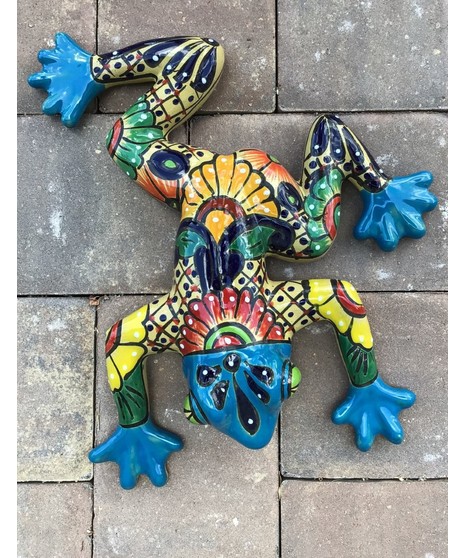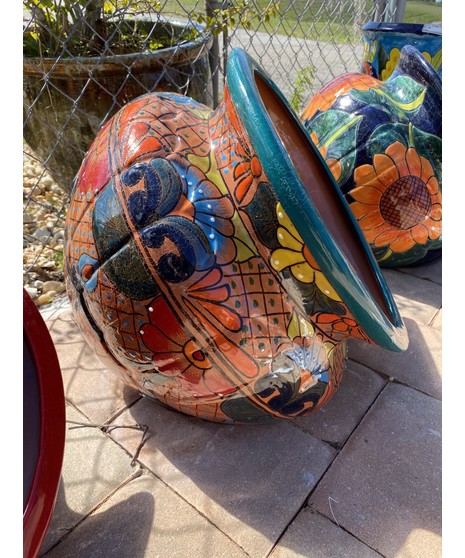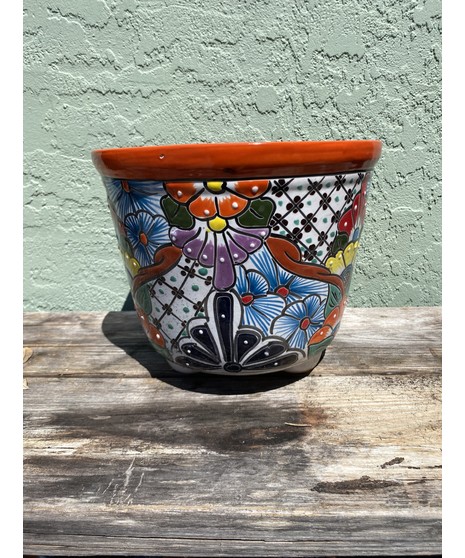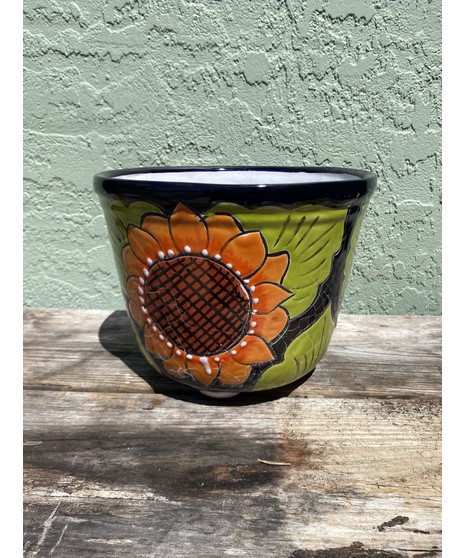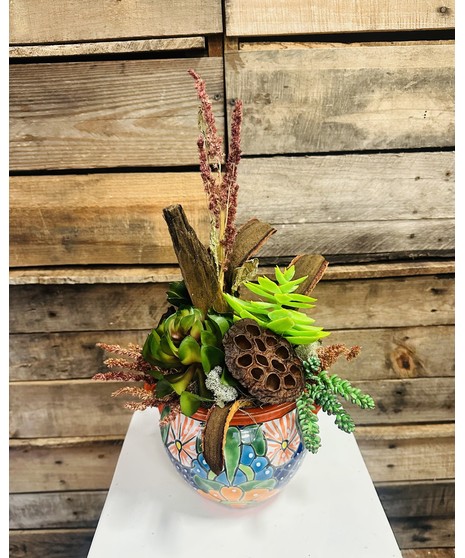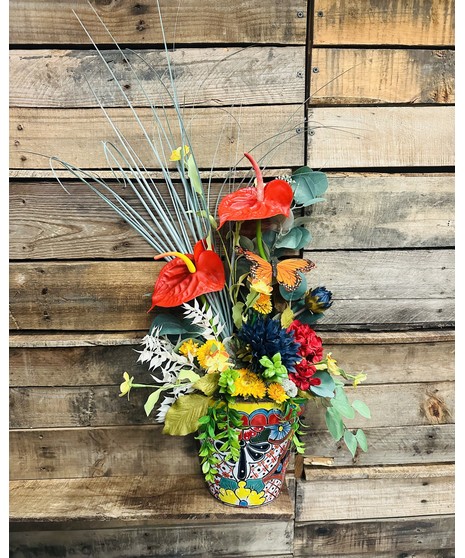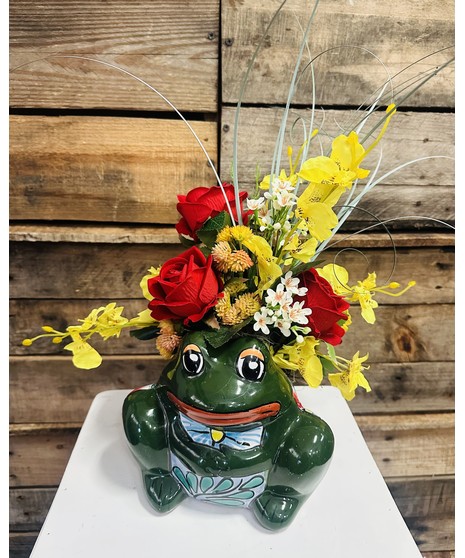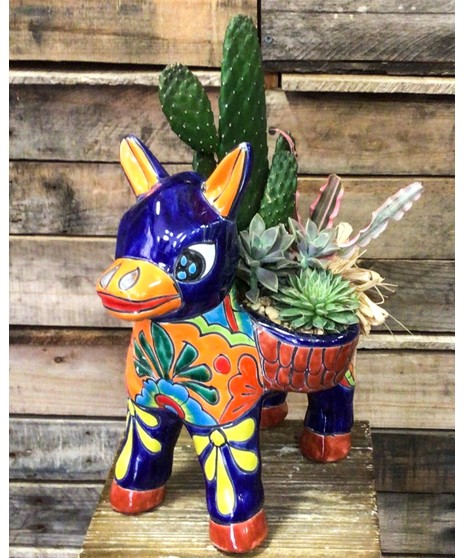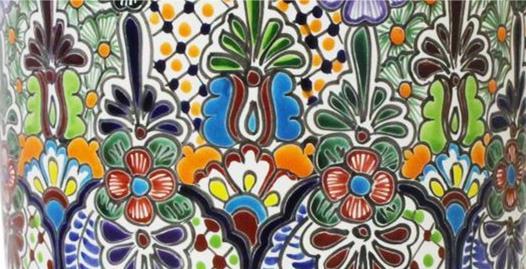
Talavera Mexican Pottery Categories
Favorites in Talavera Mexican Pottery
Talavera Pottery
The Talavera Pottery are works of art handcrafted by master artisans using techniques that have been passed down generation to generation since the 16th century. The Talavera pottery is produced in the Mexican state of Puebla, and Dolores Hidalgo.
Each piece is hand molded clay or poured ceramic. The pottery is fired in gas kilns for over a week: after the initial firing the artisans begin to glaze and paint and the figures and planters begin to resemble the works of art you see here.
After being painted and glazed the ceramics are fired again for about 10 days at high temperatures giving them excellent durability. Each piece from start to finish takes about a month to produce. These age old techniques, vibrant colors, and delicate attention to detail produce unique one of a kind pieces that are truly works of art.
Enjoy the knowledge that you are buying a work of art that is not mass produced in China, but the product of highly skilled artisans who take pride in their work, using techniques passed down from previous generations.
Talavera pottery is not frost or freeze proof. Like your favorite plant, the pottery must be taken indoors before any danger of frost. Talavera also does not like to sit in water, wet mulch, or be subjected to extreme humidity like a growing green house.
** Items can not be shipped. For local pick up or delivery only. **
Frequently Asked Questions
What is Talavera Pottery?
Talavera Pottery is a distinctive and vibrant form of Mexican ceramics that has a rich history dating back to the 16th century. Originating in the city of Puebla, Mexico, this traditional pottery style is renowned for its intricate hand-painted designs and brilliant colors. The name "Talavera" is derived from Talavera de la Reina in Spain, where the technique was initially developed before being brought to Mexico by Spanish artisans. The artistry of Talavera Pottery lies in its meticulous craftsmanship, with each piece being carefully molded, glazed, and decorated by skilled artisans who pass down their techniques through generations.
The beauty of Talavera Pottery is in its elaborate patterns and vivid color palette, often featuring motifs inspired by Mexican flora and fauna, as well as geometric and abstract designs. The most common colors used in Talavera Pottery are blue, yellow, green, orange, and black, each adding to the pottery's striking visual appeal. Talavera pieces range from everyday household items like plates, bowls, and mugs to decorative items such as vases, planters, and tiles. Each piece of Talavera Pottery is unique, reflecting the individuality and creativity of the artisan who crafted it. This pottery not only serves as functional art but also as a cultural emblem, celebrating the rich heritage and artistic traditions of Mexico.
What does Talavera mean?
The name "Talavera" is derived from Talavera de la Reina in Spain, where the technique was initially developed before being brought to Mexico by Spanish artisans.
What is the difference between Almeria Pottery and Talavera Pottery?
While both Almeria Pottery and Talavera Pottery are rooted in rich ceramic traditions, they differ in their origins, styles, and production techniques.
Talavera Pottery, originating from Puebla, Mexico, is renowned for its vibrant colors and intricate hand-painted designs. This pottery style is heavily influenced by Spanish, Moorish, Italian, and Chinese ceramics, reflecting a blend of cultural aesthetics. The hallmark of Talavera Pottery is its use of a white tin-glazed base decorated with elaborate patterns in a color palette primarily consisting of cobalt blue, yellow, green, orange, and black. Each piece is crafted with meticulous attention to detail, involving a labor-intensive process that includes multiple firings and hand-painting by skilled artisans. The designs often feature floral motifs, animals, and geometric patterns, making each piece a unique work of art.
Almeria Pottery, on the other hand, hails from the Almeria region in Spain, specifically the town of Níjar. This pottery tradition has its roots in ancient Iberian and Moorish cultures, reflecting the rich history of the region. Almeria Pottery is characterized by its rustic, earthy aesthetic and the use of natural, muted colors derived from local clays and minerals. The designs are typically more straightforward and more functional, often featuring geometric patterns and motifs inspired by the natural landscape of the Almeria region. The production process of Almeria Pottery is less elaborate than that of Talavera, focusing on creating durable, practical pieces for everyday use.
While Almeria and Talavera Pottery are connected to Spanish ceramic traditions, they differ significantly in their artistic styles, production techniques, and regional influences. Talavera Pottery is celebrated for its bright, intricate designs and elaborate craftsmanship, whereas Almeria Pottery is appreciated for its rustic simplicity and functional beauty.
Where did Talavera Pottery come from?
Talavera Pottery originates from the historic city of Puebla, Mexico, where it has been crafted for over four centuries. The tradition of Talavera Pottery began in the late 16th century when Spanish colonizers introduced the techniques of Spanish Talavera, itself influenced by Moorish, Italian, and Chinese pottery styles. Artisans in Puebla embraced these techniques, infusing them with indigenous Mexican artistry to create a unique and vibrant ceramic tradition. The region's abundant natural resources, such as high-quality clay and mineral-rich glazes, provided the perfect foundation for this exquisite pottery.
The distinctive Talavera style flourished in Puebla, becoming an integral part of the city’s cultural and artistic identity. The production process of Talavera Pottery is intricate and labor-intensive, involving multiple stages of shaping, firing, glazing, and hand-painting. This craftsmanship has been preserved and passed down through generations, with artisans adhering to stringent standards to ensure the authenticity and quality of each piece. The city of Puebla, along with the nearby towns of Atlixco, Cholula, and Tecali, remains the heart of Talavera Pottery production, where workshops continue to produce these beautiful ceramics that are cherished worldwide for their historical significance and artistic beauty.
